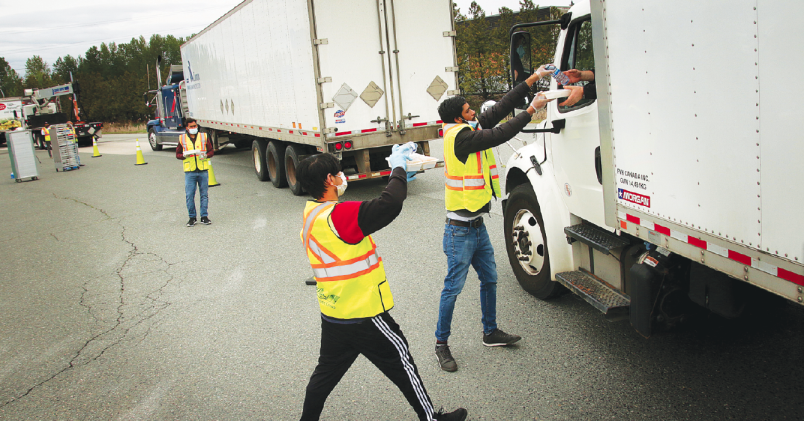Health checkpoints could prevent quick windfall after U.S. economy reopens
Many Canadian businesses waiting for a reopening of the domestic economy may be anticipating the quickly approaching restart of the U.S. market even more.
With the United States accounting for 75% of Canada’s foreign trade, how exactly the U.S. economy reopens will play a major role in the Canadian recovery. But with reopening businesses falling under state jurisdiction, how each region reopens will differ greatly.
.C.’s closest neighbour, Washington state, has been among the slowest to roll out a reopening plan – but that’s not necessarily a bad thing, said Canada West Foundation Trade & Investment Centre director Carlo Dade.
Washington governor Jay Inslee has extended a stay-at-home order to least until May 4 and said the state’s COVID-19 testing capabilities need to go through “enormous expansions.” The state also joined a pact with Oregon and California to coordinate their reopening; neither California nor Oregon has specified a date for businesses – only medical procedures and surgeries are being phased back in.
But many other states are playing by looser rules, Dade said. And in a system where the U.S. and Canadian trucking sectors are essentially integrated, that means another major milestone that needs to be reached is a health-check policy for all truck drivers crossing the border.
“It’s less of a problem for B.C. because Oregon, Washington and California have their heads screwed on straight,” Dade said. “But for Alberta, for example, trucks pass through Idaho, North Dakota, Oklahoma, Wyoming.… states with the strongest resistance to public health measures. Going forward, we have about six million trucks a year that cross the northern border; so how do you then have a border that’s completely open for six million potential [disease] vectors crossing the border every year?”
States like Tennessee offer a glimpse of how reopening can roll out in places that are already doing so. The state is allowing restaurants and retail stores to open at a maximum of 50% capacity. In order to reopen, the state’s restaurant employees must wear masks and gloves, all customers need to be screened, tables must be set a minimum of six feet apart and menus must be disposable or sanitized.
Retail stores, meanwhile, are asked to stagger shifts to enforce social distancing, use plastic barriers between the cashier and customers and increase the use of curbside delivery. None of these rules, however, will be enforced on a state level and will be up to each business to manage. Tennessee reported its highest single-day increase in new COVID-19 cases, at 478, just one day before restaurants reopened.
As a result, a health checkpoint at the border, while needed, will bring with it the type of wait times last seen after 9/11 in 2001, when stricter security measures spurred a traffic crunch. That, Dade said, dents the potential for Canadian exporters to quickly capitalize on a U.S. reopening until a vaccine becomes widespread.
“Do we stop trucks at the border and get drivers tested?” he said. “You’ve seen the backups at the Peace Arch during 9/11. Do we have to disinfect trucks coming in? Do we not allow drivers to exit the cab and use washroom facilities? You run into all these issues, and you have to worry about all the hidden things that don’t present themselves out front.
“I don’t think the easy movement of goods across the border will continue,” Dade added, noting that manufacturing will be the slowest to resume because it depends on supply chains beyond Canada and the U.S. Some foreign carmakers, for example, are planning to reopen plants in early May, although plans by domestic auto manufacturers have so far been scuttled by the opposition of United Auto Workers union.
Even if one disregards the border safety issues, King said, Canadian exporters should be cautious because the return to normalcy will be far from immediate – even if cheap gas may encourage some to spend.
“Even if individual states allow people to go out, work and spend again, will they feel safe enough to do so?” he said. “And how much will millions of newly unemployed Americans want, or be able, to spend when things do reopen?”
Then there’s the worst-case scenario: A too-swift reopening that causes a second outbreak.
Werner Antweiler, an associate professor at the University of British Columbia’s Sauder School of Business, said that’s the most worrisome question for everyone in Canada and the United States.
“This may force the economy into a W-shaped rather than V-shaped recovery,” Antweiler said. “If a quick loosening of restriction backfires, it could do yet more damage to the U.S. economy. That is what some call the risk of an L-shaped, non-recovery.” •
Source of this article and other great articles


